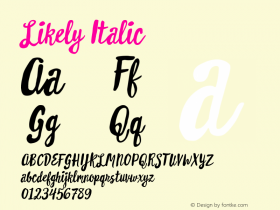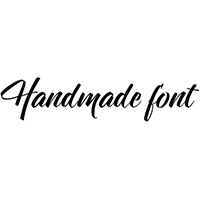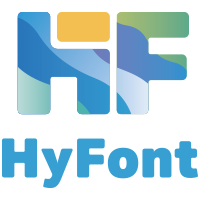Web FontFonts: A New Decisive Step Towards More Typographic Diversity on the Web

One month after the launch of Firefox 3.6 which – amongst other things – introduced support for the Web Open Font Format (abbreviated as WOFF), FontFont released its first batch of Web FontFonts. The press release reads:
A more diverse and beautiful web is about to unfold. The latest release of the FontFont® typeface library marks the beginning of a new era for typography – FSI FontShop® International is introducing the first ever stand-alone FontFonts for the web. Finally web designers can use professional typefaces for their projects without relying on system fonts or webfont services. This long-awaited step enables a more seamless and effective transition from print design to the web. More than 30 of the most successful FontFont families are available now as Web FontFonts, including FF DIN®, FF Meta®, FF Dax®, and FF Kievit®. More will follow soon.
In a recent chat conversation, German type guru (right back atcha, silly bastich ; ), FontFont Marketing Director (and good buddy) Ivo Gabrowitsch mentioned he had been waiting two years for this moment. Two years?
Well, almost two years. (laughs) When Safari added @font-face support in March 2008 I decided to make this the subject of my graduation thesis. Since June that same year I had been working on my own on a concept for the launch of webfonts for the professional market.

Immediately upon graduation I was hired as FSI's marketing dude. There we continued working on the concept, refining and improving it, while closely following further developments in the field. Technically it started to become really interesting once Erik van Blokland, Tal Leming, and Mozilla's John Dagget announced WOFF, the format that enjoyed support from all the major type foundries, including FSI. The biggest challenge was not just the technical part, but above all the licensing and pricing. This was completely new ground for us, and for the entire type industry for that matter. We had innumerable discussions about this, collaborating intensively with the FSI TypeBoard and other experts. In the end I am confident we have found a compromise which will work well for the customers as well as for our designers and us.
What's different about Web FontFonts?
When purchasing Web FontFonts you receive two formats currently supported by the most common web browsers – EOT Lite for Microsoft® Internet Explorer, and WOFF for Mozilla® Firefox®. This covers about 85% of the market. As for the remaining – Google Chrome, Safari, Opera, and the rest – it is to be expected that they will soon join in implementing WOFF as well. The fonts are delivered with User Guides featuring helpful information for web developers and system administrators. HTML test pages for each of the downloaded fonts are also included.
Just like any other fonts, Web FontFonts are offered in different configurations, ranging from complete families, over Basic Sets comprising of the common styles Regular, Bold, Italic, and Bold Italic (if available in the family), to single fonts. Similar to the new Office FontFonts, tabular lining figures are the default figure set, and small caps with proportional oldstyle figures (if present in the character set) are available as separate fonts. Language support is the same as for OpenType® (CFF/PostScript) and Office FontFonts (TTF) – Standard covers Western, while Pro supports additional languages.
Due to their very nature and purpose, both licensing and display are quite different from "regular" fonts.
The licensing scheme is not based on domain or bandwidth, but on average monthly page views for all websites managed by the person or organisation licensing the webfonts. Just like any other font licence, webfont licenses can be upgraded if the need arises.The appearance of webfonts is optimised for onscreen viewing. Complying with the most current standards, they are optimised for use with ClearType®, available from Windows XP® and the standard way of type smoothing since Windows Vista®.Frequently Asked Questions
Since their announcement on the FontShop Blog last week the Web FontFonts gave rise to very interesting discussions, notably on Typophile. Below are the three most often recurring questions:
Why don't you use any of the Web FontFonts on your site?
F S I| We felt it was most important to put our energy behind getting webfonts released so users can make wonderful things with it as soon as possible. We will post our own demo of the fonts very soon.
Why is licensing based on pageviews?
F S I| Our goal was to create pricing levels that were most equitable for a broad range of uses. With the three tiers at 500k, 5mil, and 50mil pageviews/month we're dividing Web FontFont use into broad categories so that a large international corporation isn't paying the same rate as a personal blog. We chose pageviews because we feel metrics like number of domains and bandwidth aren't accurate representations of an organization's popularity on the web, and would often be unfair to the licensee. We don't want anyone to feel overwhelmed about "tracking their traffic", and will only spot-check Web FontFont use from time to time. Our goal is to be sure the fonts are licensed properly and fairly, not to monitor every pageview on every domain. In fact, we don't even require a domain name when you license. Choosing a web license is the same as it has always been for desktop fonts: pick the license that best fits you. Extend when you need to. We trust you.
Why were EOT Lite and WOFF your formats of choice?
F S I| EOT and WOFF are the only two secure formats that are supported by browsers with a major market share. And we feel that WOFF is the format with a future — it is very likely to be supported by Webkit (Safari) and Chrome. We aren't nearly as excited about sIFR, Cufon, and SVG because they lack the flexibility, quality, and security of WOFF fonts linked via CSS.
For more details about licensing and technical issues please see the Web FontFont EULA and the Web FontFont User Guide. Web FontFonts are available through FSI FontShop International and its distributors (e.g. FontShop). For more information please visit the FontShop.com Blog:
Introducing Web FontFonts »Get all the details about Web FontFonts and how they work »Download the Web FontFont User Guide (PDF) »
Update:Now that the fonts have been available for a few weeks and designers have had a chance to integrate them in their websites, we've collected a few of the best real-world examples of Web FontFonts in use.


































 闽公网安备35010202000240号
闽公网安备35010202000240号